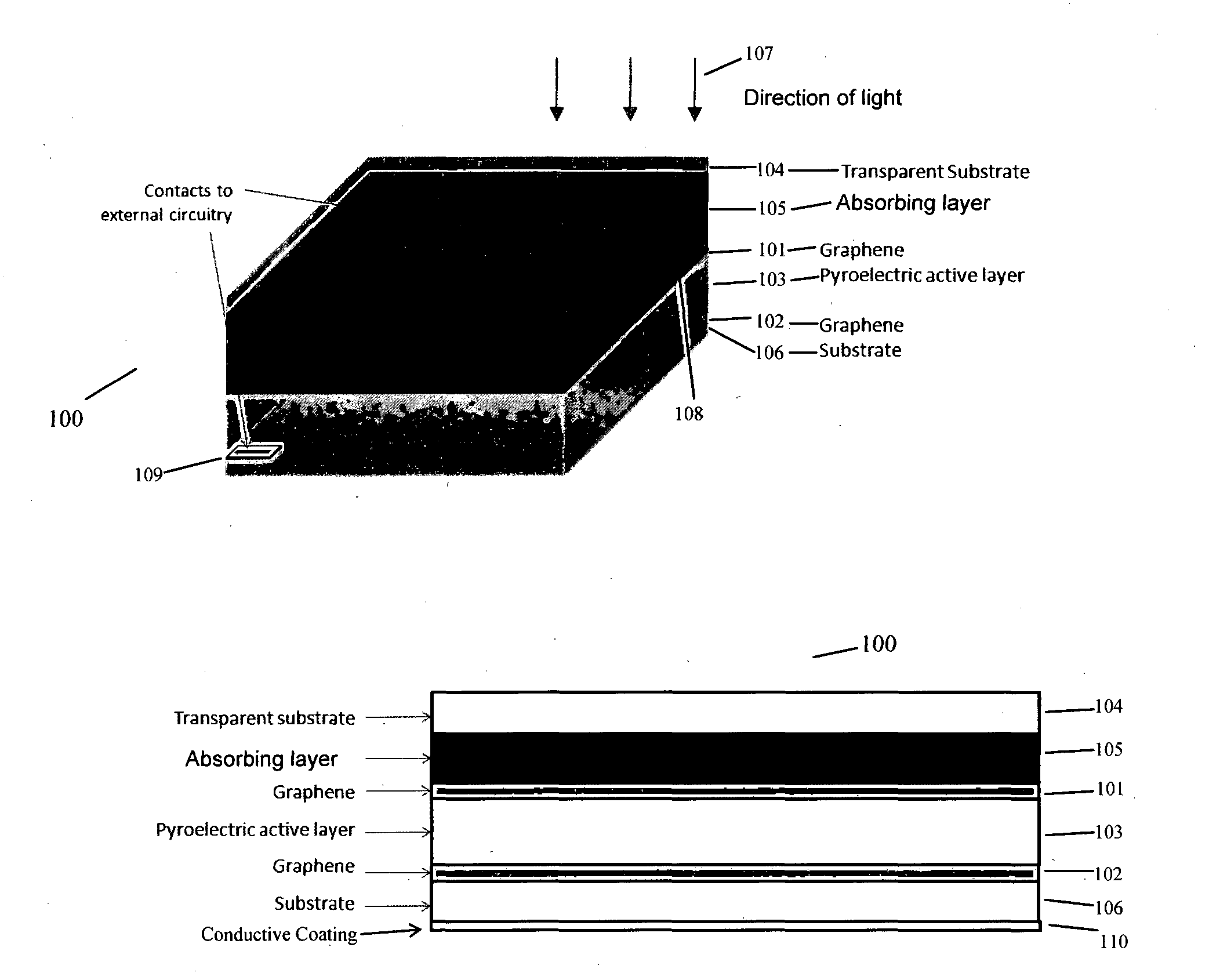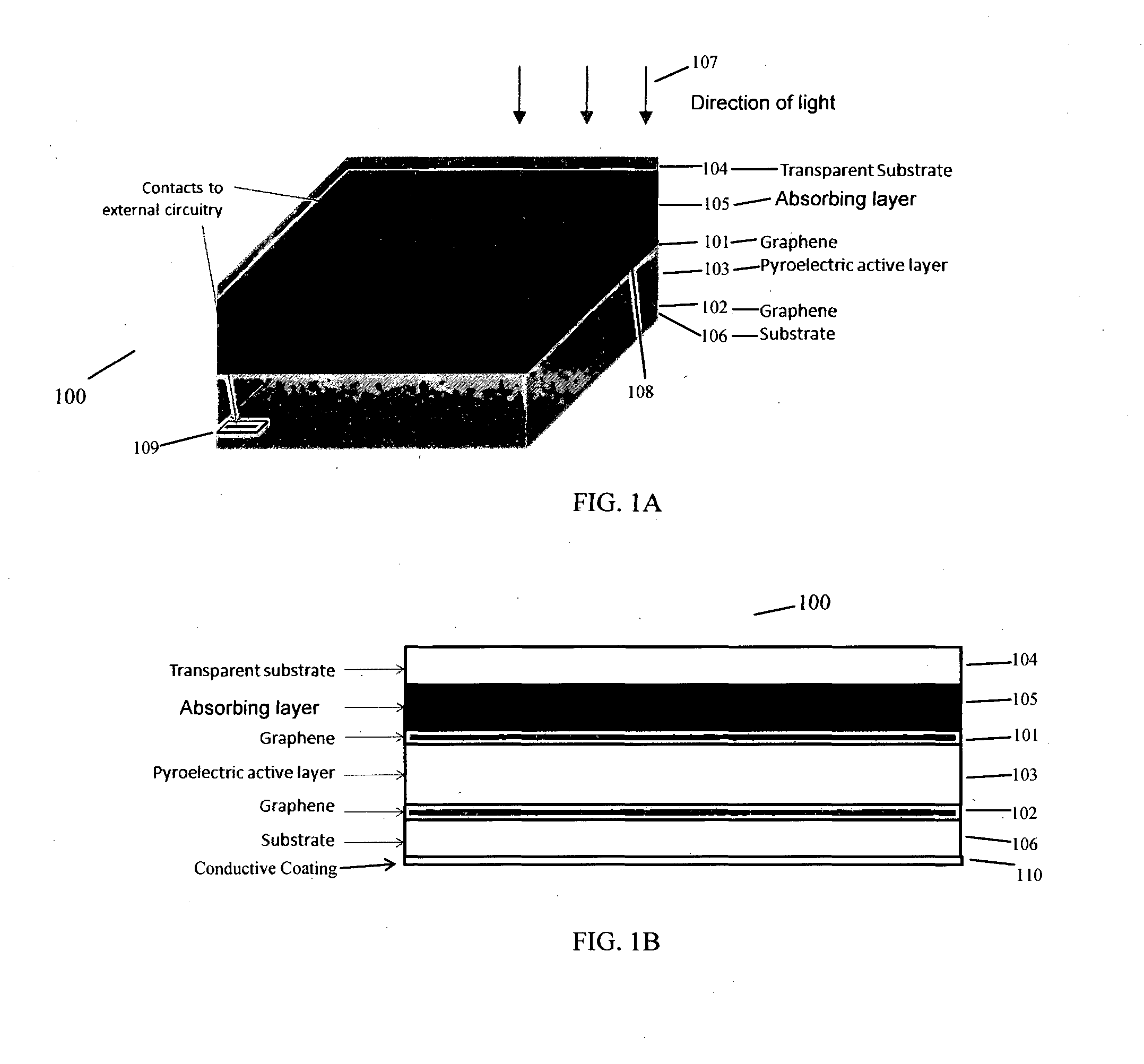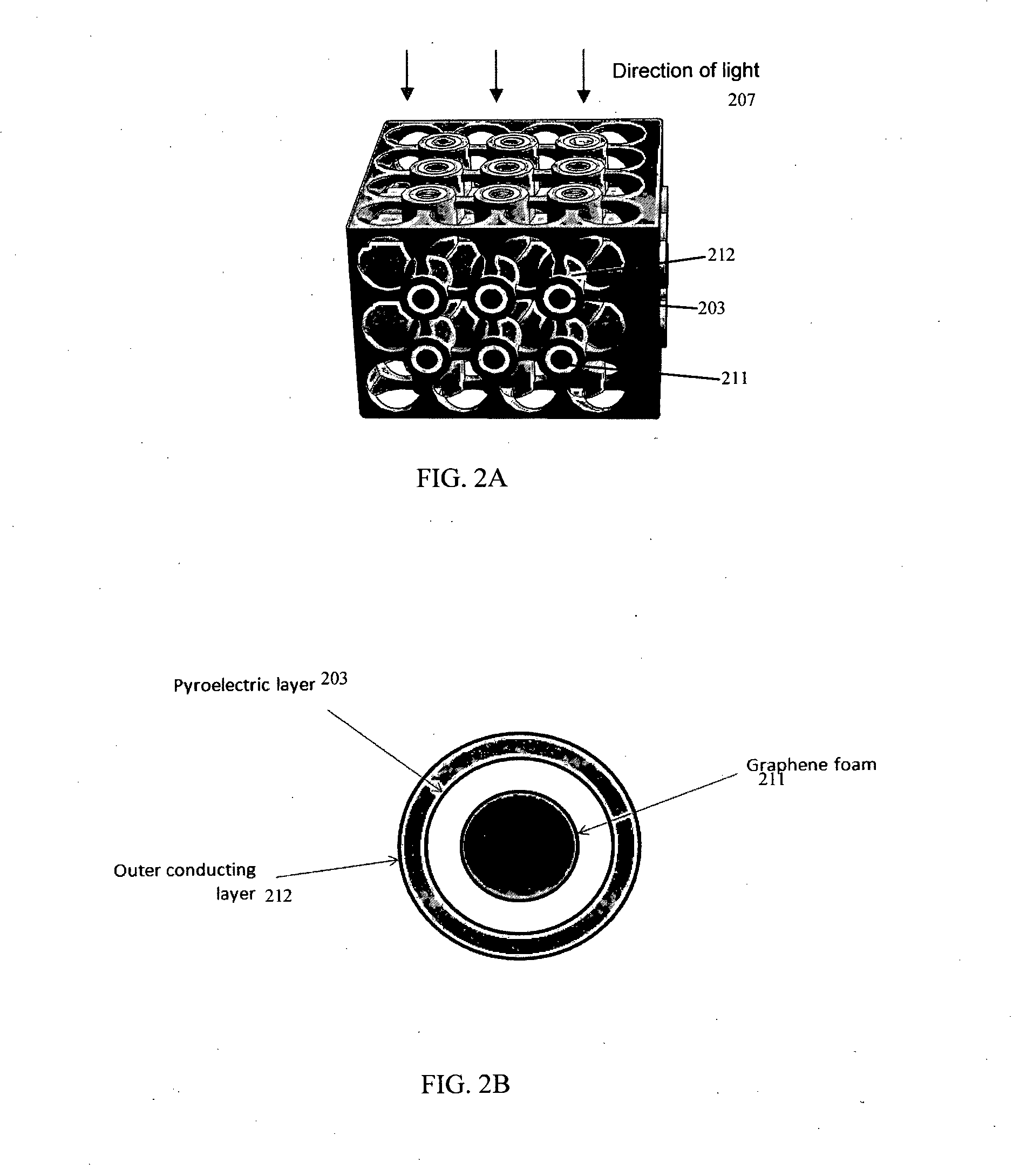Pyroelectric detector using graphene electrode
a graphene electrode and pyroelectric technology, applied in the direction of pyrometry using electric radation detectors, optical radiation measurement, instruments, etc., can solve the problems of low sensitivity, high cost, and low resolution of microbolometers, which can operate at room temperature, and achieve the effect of increasing sensitivity, tunability and mechanical flexibility of sensors
- Summary
- Abstract
- Description
- Claims
- Application Information
AI Technical Summary
Benefits of technology
Problems solved by technology
Method used
Image
Examples
Embodiment Construction
[0028]A description of example embodiments of the invention follows.
[0029]A version of the invention uses low absorbing, low reflecting graphene electrodes along with flexible pyroelectric materials for the development of tunable and flexible pyroelectric infrared sensors.
[0030]In accordance with a version of the invention, the top electrode of a pyroelectric sensor (such as an infrared sensor) is made using low absorbing, low reflecting graphene. By virtue of being both low-reflective and low-absorbing, having a low optical absorption across the entire spectrum (including but not limited to the infrared), graphene enables a device in accordance with a version of the invention to tune which wavelengths of light are detected, which can be achieved by selecting appropriate materials for the pyroelectric and (optional) absorbing layers. The ability to tune which wavelengths are absorbed enables the limiting of the spectral flux reaching the detector, allowing the fabrication of spectra...
PUM
 Login to View More
Login to View More Abstract
Description
Claims
Application Information
 Login to View More
Login to View More - R&D
- Intellectual Property
- Life Sciences
- Materials
- Tech Scout
- Unparalleled Data Quality
- Higher Quality Content
- 60% Fewer Hallucinations
Browse by: Latest US Patents, China's latest patents, Technical Efficacy Thesaurus, Application Domain, Technology Topic, Popular Technical Reports.
© 2025 PatSnap. All rights reserved.Legal|Privacy policy|Modern Slavery Act Transparency Statement|Sitemap|About US| Contact US: help@patsnap.com



